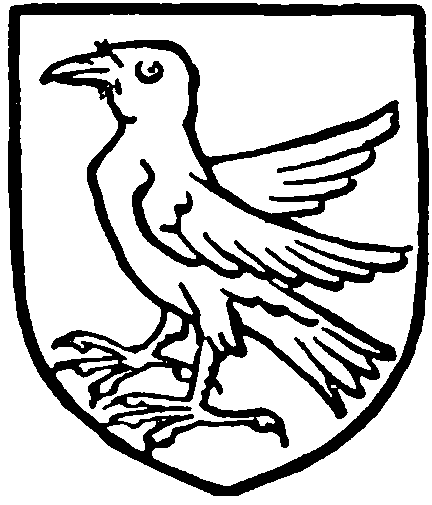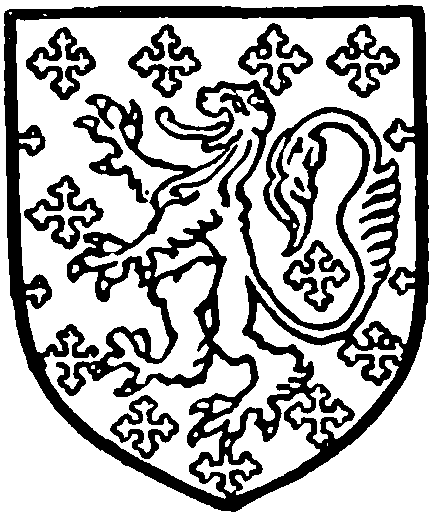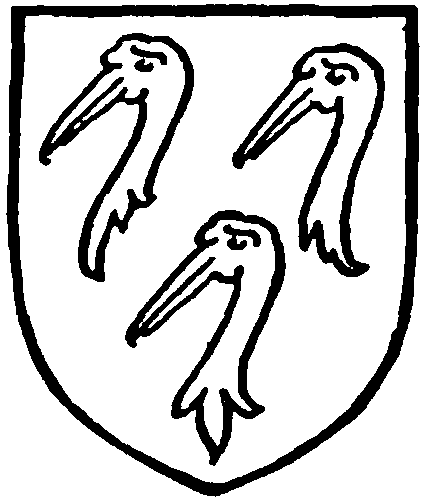A History of the County of Hampshire: Volume 3. Originally published by Victoria County History, London, 1908.
This free content was digitised by double rekeying. All rights reserved.
'Parishes: Weston Corbett', in A History of the County of Hampshire: Volume 3, ed. William Page (London, 1908), British History Online https://www.british-history.ac.uk/vch/hants/vol3/pp386-388 [accessed 30 April 2025].
'Parishes: Weston Corbett', in A History of the County of Hampshire: Volume 3. Edited by William Page (London, 1908), British History Online, accessed April 30, 2025, https://www.british-history.ac.uk/vch/hants/vol3/pp386-388.
"Parishes: Weston Corbett". A History of the County of Hampshire: Volume 3. Ed. William Page (London, 1908), British History Online. Web. 30 April 2025. https://www.british-history.ac.uk/vch/hants/vol3/pp386-388.
In this section
WESTON CORBETT
The parish of Weston Corbett, covering only 513 acres, is immediately north-east of Herriard and northwest of Weston Patrick. It now forms a part of the parish of St. Lawrence Weston Patrick and consists of a stretch of meadow and arable land sandwiched between the south-eastern boundary of Herriard Park and the main road which forms the north-western boundary of Weston Patrick, and continues north-east to Upton Grey. This road, running between Weston Corbett and Weston Patrick, separates the two villages, Weston Patrick with its church, schools, and picturesque cottages lying on the south side of the road, while Weston House, the two farms, and the two cottages comprised in Weston Corbett, lie on the north side, and seem to be part of Weston Patrick. There is no church or school in the village, which is thus dependent on Weston Patrick.
Weston House lies east of the narrow lane that leads north uphill from the main road, while on the opposite side are the one or two cottages of the village and the Manor Farm. North of the farm the lane curves downhill to the west, and then turning sharply north and north-west goes off in two branches across the west of the parish towards Tunworth.
The soil of the parish is chalk with a subsoil of chalk producing crops of wheat, barley, and roots. The actual proportion of the arable land, pasture, and woodland in the parish is difficult to gauge since the return for Weston Patrick and Weston Corbett is made together, as 695¾ acres of arable land, with 299¼ acres of permanent grass, and 457 acres of woodland. Certainly little of the woodland is in Weston Corbett since, except for a thin belt of copse running along about half a mile of the western boundary, an extension of Herriard Park, there are no woods in the parish.
MANOR
WESTON CORBETT is not mentioned in the Domesday Survey, but in 1224 it was held of the crown by Thomas Corbett from whom the manor derived its name. (fn. 1)
Thomas Corbett, who belonged to the great house of the lords of Caus, had evidently granted his land of Weston to Robert son of Madoc for life, and in 1224 recovered seisin of it, but Henry III commanded that a dowry of lands in Weston should be assigned to the wife of Robert, son of Madoc, 'for the love he bore her, in that she had been foster-mother to his niece, the daughter of Llewellyn Prince of Wales.' (fn. 2)

Corbett. Or a corbeau sable.
How Weston Corbett passed from the Corbetts is not known, but at some time during the fourteenth century it became the property of another great family connected with the Welsh Marches, that of De Breuse, lords of Gower.
William de Breuse, who died about 1325, held the manor. (fn. 3) He appears to have alienated this property temporarily to John de Laudimor, who in 1304 held demesne lands in Weston Corbett, and was granted free warren there by Edward I, (fn. 4) and in 1316 was described as holding the vill of Weston Corbett of the king. (fn. 5)

De Breuse. Azure crusilly and a lion or.
On the death of William de Breuse the manor descended in moieties to his daughter Olive, wife of John de Mowbray, and his grandson John de Bohun, son of his daughter Joan. (fn. 6)
John de Mowbray, whose wardship and marriage had been granted to William de Breuse in order that he might marry his daughter, had the misfortune to become embroiled in a dispute with the Despensers, whereby he incurred the wrath of Edward II. He was captured after the battle of Boroughbridge, 1322, and hanged, 'the royal spite being so hot that burial was grudgingly granted to his corpse.' (fn. 7) Olive and her son John were imprisoned in the Tower, her late husband's lands being confiscated, and she herself having to yield up much of her own inheritance. (fn. 8)
An inquisition taken upon her death in 1336 shows that Richard de Peshale, her second husband, held half the manor of Weston Corbett as his wife's inheritance, and that upon her death it fell into the king's hands. (fn. 9) An order followed forbidding further meddling with the moiety, as the king learnt that Richard de Peshale held of Olive's inheritance, and that a daughter, born of the marriage, was living. (fn. 10) However, her son by her first husband became her heir, since John de Mowbray, (fn. 11) the younger, held half the manor in the following year, (fn. 12) and afterwards parted with it to the other co-heir of William de Breuse, John de Bohun of Midhurst, who thus became sole lord of the manor. (fn. 13) John de Bohun died in 1367 (fn. 14) and left a son aged five years, of whom the wardship was granted to Thomas de Burton. (fn. 15)
This son, Sir John de Bohun, died in 1433, and his heir also was a minor. (fn. 16)
The manor passed from the Bohuns with the marriage of Mary daughter and heiress of Sir John Bohun of Midhurst to Sir David Owen, a natural son of Owen Tudor. (fn. 17) John Owen of Wootton, his descendant, sold the manor in 1558 to James Altham, alderman of London, (fn. 18) who sold it almost immediately to John Elliot, a mercer of London. (fn. 19) A slightly different account of the descent appears in a petition filed in Chancery between 1558 and 1579 by John Grene for waste committed by John Harte and Humphrey Ockley. (fn. 20) According to statements therein made, it seems that John Owen leased the moiety of the manor to John Harte and Thomasina his wife for a term of years, and sold the reversion to Mr. Elliot of London, who sold it afterwards to Mr. Alton (Altham) of London. By Alton the reversion was sold to William Cufande, who sold it to John Grene. This account of the order of the sales is incorrect, as it was Altham who sold it to Elliot, and the whole manor, not the moiety, was sold; but the truth of the sale to Cufande is attested by a fine of 1559, which seems to indicate a sale of the manor (it is here described as the manor, not as a moiety) by John Elliot to Simon and William Cufande. (fn. 21)
From another Chancery proceeding it appears that Henry Owen tried to claim the manor. According to his own account he was the son of John Owen by Isabel Catesby, and was under age when his father died in 1558. His mother then married John Prestall, described as a hopelessly dishonourable person, who obtained the young heir's property by false pretences, and even wished him to murder his mother. (fn. 22) He could have had, however, no claim, since his father had sold the manor.
There is proof of the sale to Grene in that John Grene held property in Weston Corbett (described as land, not as the manor) before his death, which occurred about or before 1587. (fn. 23) To his widow Agnes he left this land, with reversion in tail male to his cousin, John Grene of Basingstoke, and final remainder to his nephew John Grene. The widowed Agnes remarried, taking as second husband George Norton, whose right to the property was contested by John Grene, the nephew, on the grounds that in remarrying, Agnes had failed to fulfil certain conditions under which alone she could hold the property. (fn. 24)
The name of Norton is connected with the manor during the next century, as in 1678 Richard Norton of Southwick sold it to Sir Thomas Higgons for £1,645. (fn. 25) George Higgons, his eldest son, sold the manor in 1700 to Gilbert Serle, a merchant of Leghorn. (fn. 26) Peter Serle held the manor in 1738, (fn. 27) and the name of his son, (fn. 28) Peter Serle, occurs in 1784. (fn. 29) To this latter Peter Serle, Wentworth Serle, his younger brother, sold his interest in the property in 1793. (fn. 30) By his will, proved 1827, Peter Serle bequeathed his manor to the son of his sister Sukey, Sir William Oglander, who sold it to George Purefoy Jervoise. (fn. 31) In 1847 the niece of George Purefoy Jervoise, Mrs. Eliza Fitz Gerald, succeeded to the property, and in 1848 or 1849 exchanged it for other land with her first cousin, Francis Jervoise Ellis Jervoise, whose grandson, Mr. F. H. T. Jervoise, is the present lord of the manor. (fn. 32)

Higgons. Vert three cranes' heads razed argent.
The church was in ruins at the end of the sixteenth century, since which date there has been no church in the parish. The earliest mention of a church of Weston Corbett occurs in 1305, when John de Laudimor was patron. (fn. 33) The advowson afterwards passed to the lords of the manor. John de Bohun, father and son, both held the presentation.
The right having lapsed, Lady Ann Roos presented between 1447 and 1486. (fn. 34) Later, Richard More, of the king's household, presented. (fn. 35) The lords of the manor were again patrons in the reigns of Philip and Mary and Elizabeth, John Altham and John Elliot both holding the advowson. (fn. 36)
In or about 1586 Elizabeth, on the petition of Sir James Crofte, granted the 'free chapel of Weston Corbett, now ruined and profaned,' to Edward Wymarke, to be held in common socage and by payment of rent. (fn. 37) There is no further mention of the church.
The tithes were also given to Edward Wymarke, but in 1678 were sold with the manor by Richard Norton to Sir Thomas Higgons. (fn. 38) The tithes were subsequently held by the Serles and Sir William Oglander, (fn. 39) and are still owned by the lord of the manor.